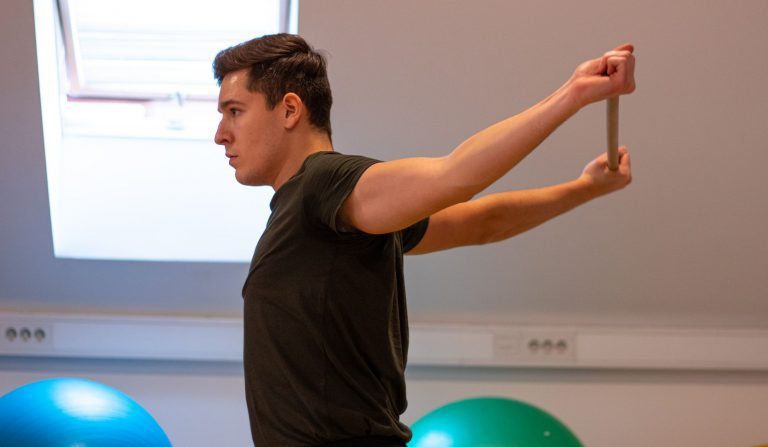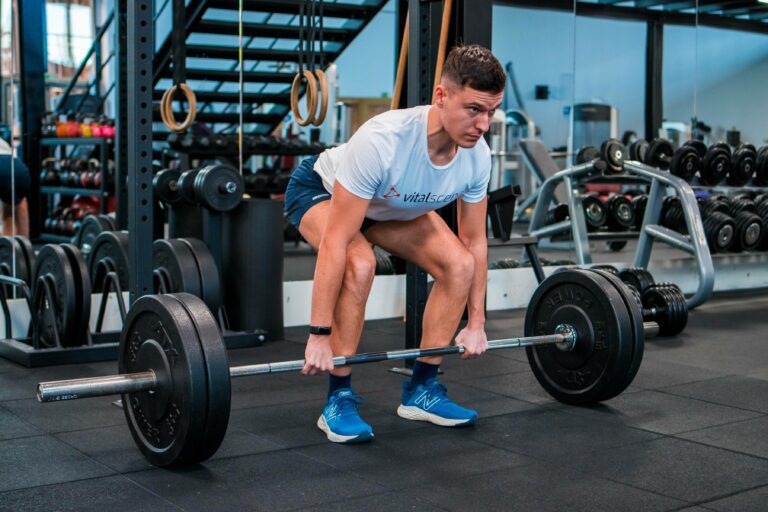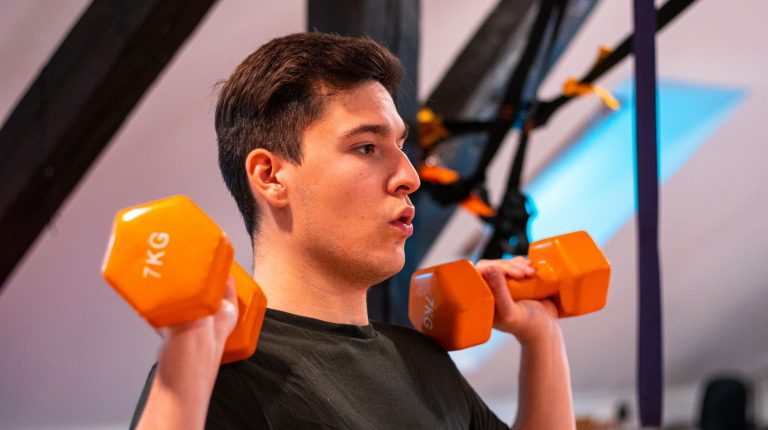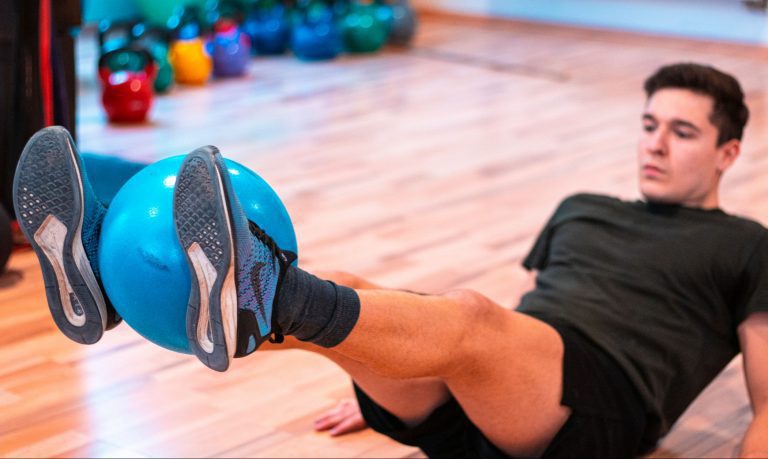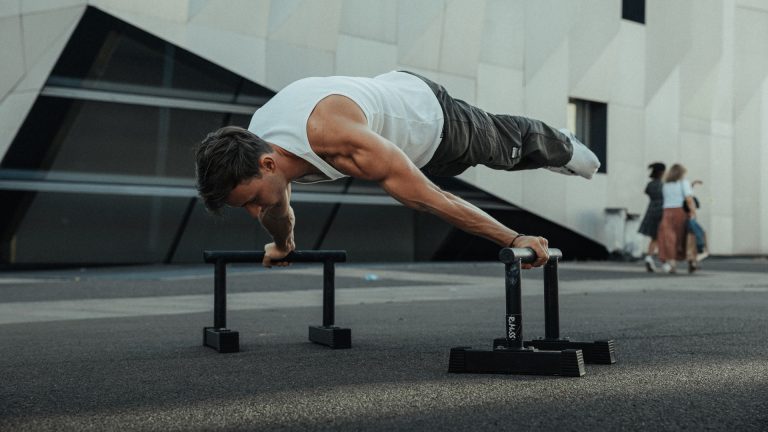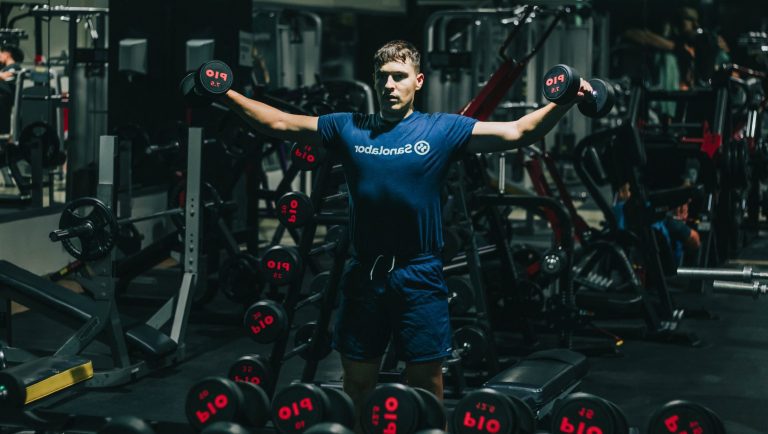Foam Rolling Massage | How Effective Is It For Muscle Recovery?
Foam rolling massage burns inside, throbs, and hurts, but damn it feels good afterward. Why is that? Today you’ll discover the mechanisms behind deep tissue massage, how it affects muscle recovery, and what foam roller to pick.
Deep Tissue Massage
Deep tissue massage has been around for a while, whether we enjoy it or not. Massages aren’t invented by us, they were here thousands of years ago. The benefits of different types are similar, as are their underlying mechanisms. Think reflexology, massage, acupuncture..yeah.
It seems like all originated from the simple fact that the application of pressure and strain can release tight spots in our muscles, making us feel relaxed afterward. It has been used in France, Egypt, and Greece many years ago.
Anyway, who doesn’t like to get a deep tissue massage? Although sometimes it tickles, it hurts, many times is uncomfortable, I love it. But paying a 100$ for a session to a professional therapist would be pretty costy aye?
Pro Tip
Foam roll at a slower pace. Do not rush during your rolling session. Stop at a point where you feel your muscle aching, try to breathe, and relax the muscle through the pain. This is the art of myofascial release. Do not rush it, as your body will try to resist the rolling, instead, allow your muscle to adapt.
Why should you get a foam roller?
This is where foam rolling comes in place. It is a simple fitness tool that can help you reduce muscle tightness, soreness and improve circulation, working on a similar mechanism to massage. It is a sort of an active self-massage, but controlling your pressure yourself seems quite good to me, right? Plus it costs way less, and I can bring my own personal massage therapist with me when I travel (I’m talking about the foam roller).
Foam Rolling
Foam rolling is a form of self-massage which involves rolling your muscles onto a tool like a foam roller. By applying pressure to our muscles, we can mimic the mechanisms and consequentially effects of a real massage.
Foam rolling is one of the most practical and convenient types of massages, great for improving flexibility, mobility, performance, warming up, and reducing tightness and muscle soreness.
SMR or Self-Myofascial Release
As complex and fancy as it sounds, self-myofascial release really just refers to releasing adhesions in your fascia. It is about breaking up myofascial trigger points, or hyperirritable spots in your muscles. If you didn’t understand any of it, don’t freak out. We’ll clarify here:
Fascia
Adhesions
Trigger Points
Fascia is a band of connective tissue that wraps around your muscles, organs, and vital tissues in your body. It has high collagen content and functions to stabilize, attach, separate, or enclose tissues. Healthy fascia allows a smooth transition and slipping between muscle fibers, and is elastic.
Adhesions, also called fibrous or fascial adhesions, are dense bands of tissue that stabilize and provide attachment between tissues. Excessive adhesion build-up prevents slippage and movement, limiting fluidity of movement. This causes stickiness that limits mobility.
Trigger points refer to specific spots in the muscle/fascia which are irritable and painful when compressed. They originate from tight or injured muscles and they are sensitive areas in the muscle. Applying concentrated pressure to these points is known to relieve muscle tension.
Back to SMR or self-myofascial release, it aims to release those adhesions, to break up muscle knots by applying concentrated pressure to trigger points or spots in your muscles, which supposedly leads to reduced tension and improved movement fluidity.
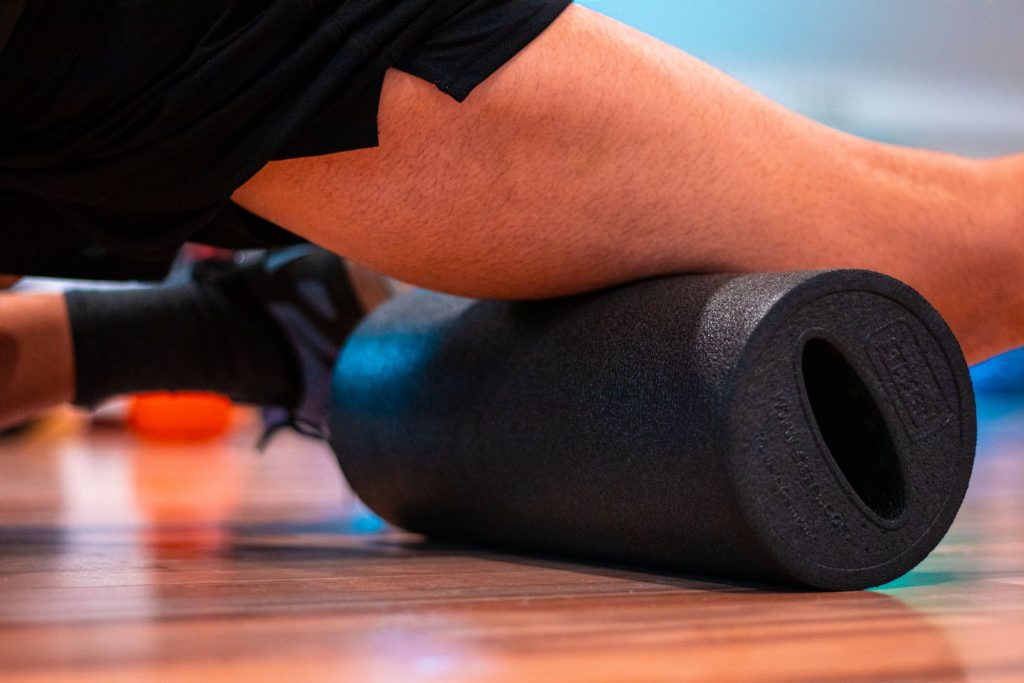
Different Foam Roller Density
Foam rollers come in different sizes and colors but most importantly, densities. The density of your roller will determine your rolling experience and the benefits you’d get. Sadly, you can feel how firm a foam roller is by looking up a product image. Be a foam roller detective, read how dense it is in the product description, to pick the right one for you.
Softer Rollers
Moderate Density
Dense or Solid
Softer foam rollers are great for newbies, beginners, and amateurs. It will provide a more pleasant experience, plus you won’t start hating foam rolling from the start. It is a great alternative for relaxation, warm-up, and even flexibility.
Moderate density means the roller is firm, but not rock-solid. This is the area most runners and fitness enthusiasts will use foam rollers. It is good for faster regeneration, unused muscle activation, breaking up muscle knots, enhancing mobility, and improving performance.
Dense or solid roller is for experienced foam rollers (is that how you say it?). It mimics masseuse hands with its knobs and specifically targets deeper parts of your muscles. This increases pressure and breaks down adhesions. It can improve proprioception, and balance, and release tension. Great for experienced athletes, and pros.
Pro Tip
If you’re a beginner, looking to start foam rolling to help warm up the muscles, reduce tension, and aid in recovery, start with slow foam rolling with a softer and smoother roller. As your body adapts, you can use bumpy and more solid rollers to target deeper trigger points, break muscle knots and enhance mobility.
Foam Rolling for Muscle Recovery & Performance
Foam rollers are multi-functional fitness tools. Everyone living the “active lifestyle” has seen or used foam rollers. Runners, athletes, weightlifters, swimmers, you name it, they used it.
If you’re into accelerating muscle recovery, maybe look into red light therapy or ice baths as well.
It is no secret that foam rollers are used to improve physical performance, aid in recovery, and reduce muscle tension. But the mechanisms behind these effects aren’t purely anatomical, as many think. They happen on a neurological level, deep in the muscle.
It seems like the strategic application of pressure can not only break down muscle knots and adhesions but also improve our movement fluidity, as a result. It has been shown to aid in recovery, reduce DOMS or muscle soreness, and improve mobility and flexibility.. not to spoil it all here, let’s get in.
Why is foam rolling so effective?
Foam rollers are very useful, transportable, and lightweight tools. They are pretty convenient alternative for expensive massages. By improving blood flow, foam rolling can reduce inflammation, and by breaking up muscle knots, it relieves tension. This circles in a loop which leads to better performance, faster recovery and improved mobility.
Can foam rolling improve muscle regeneration?
Yes, in fact, foam roller was shown superior to stretching in some regards. The reason behind improving regeneration is lactate clearance, reducing DOMS effect, reducing inflammation etc., which aids in faster recovery.
Common mistakes when foam rolling?
Common mistakes with foam rolling include using very hard, thick and bumpy rollers by amateurs, using improper rolling tools, rolling too fast, foam rolling on bones, ligaments, tendons or spine and applying way more pressure than the body can handle.
Can Foam Rolling Help Reduce DOMS?
Foam rolling can counteract DOMS or shorten it, by locally improving blood flow which leads to lactate clearance, oxygenation, and toxins flush-out.
1. DOMS or Delayed Onset Of Muscle Soreness
If you’ve been working out for a long time, you have felt the DOMS. Welcome to the club. You’re officially a lifter, or runner, or workouter,.. whatever. DOMS stands for delayed onset of muscle soreness. It is the feeling of tight, sore, and achy muscles after a hard workout.
DOMS is an adaptation mechanism, usually, a muscle swelling that stimulates muscle adaptation, change, or simply, growth. When we train, we tear muscle fibers down, causing micro-injuries. DOMS is what tells your body, hey buddy, you need to produce hormones and eat protein to build this muscle.
Research:
- Foam rolling seems to do the magic for DOMS. An article in the Journal of Athletic Training took a look at 8 active males who performed squats with or without foam rolling. The group that did foam rolling improved muscle tenderness, reduced DOMS, and on top of that, improved performance. (1)
- The main mechanism behind foam rolling on DOMS is its ability to improve circulation. Improving blood flow means more lactic acid is flushed, inflammation reduced and new fresh oxygen and nutrients are brought to the muscle, enhancing recovery. (2)
- Although the foam rolling effect might not be quite substantial in recovery, it can be effective to reduce pain sensation, enhance performance and increase flexibility. (3)
- 33 active males tested smooth or grid roller or passive recovery. They found out that out of all three groups, lactate clearance, and DOMS reduction were affected. No type of roller was superior for enhancing recovery, the effects were similar. Foam rolling can reduce pain and affect the thermal response, in favor of better recovery. (4)
2. Improves Muscle Circulation and Oxygenation
Foam rolling is a type of self-massage and there is not a shortage of studies showing how massage can improve blood flow. It increases skin temperature, enhances local circulation in the muscles massaged, and enhances recovery along. (5) (6)
Massaging applies pressure to the muscle, which results in increased temperature. Ever felt better after a hot bath, sauna session or light exercise? It’s because your blood flow increases acutely.
What happens when you improve circulation? Well, new and fresh blood comes and nourishes the tissues with fresh oxygen and new nutrients. It can also flush out toxins (sweat em out) and remove excess lactate in the tissue.
These toxins, lactate, and other cytokines are exactly what leave you feeling inflamed, limit your mobility, and cause stiffness or swelling. Massage seems to improve that.
3. Warm-up, Flexibility, and Athletic Performance
Over the past few years in the fitness industry, as a trainer but also an ex-athlete I’ve seen many athletes using foam rollers. Some fancier, some vibrating, some sturdy and bumpy, nonetheless, they massaged themselves.
Foam rolling, in 45 participants had a significant effect on improving range of motion (ROM) with no change to strength or muscle stiffness, especially in the groups who rolled for more than 90 seconds. (7)
While foam rolling might not be superior to stretching, because they both had similar effects. However, combining them in a way that foam rolling follows after stretching had greater effects. (8)
Other studies show the potential benefits of foam rolling on:
- improving hamstring flexibility, similar to the PNF method (9)
- enhancing range of motion, combined with dynamic stretching (90-120s) (10)
- enhancing performance by reducing DOMS, pain and improving flexibility. (11)
- reducing fatigue, which leads to better acute performance during the workout. (12)
- improving vertical jump height, dynamic and passive range of motion as well as muscle activation (13)
- improving range of motion (ROM) in rowers, effectively as stretching (14)
4. Supports Recovery and Regeneration
And last, but probably most studied and important benefit is improving muscle regeneration and enhancing or accelerating overall recovery. The mechanisms behind this are really no secret, we’ve already covered them all.
Locally improving blood flow to the muscle reduces inflammation. Reduced DOMS leads to faster recovery. Faster recovery leads to better performance. It is a useful tool to improve flexibility, mobility, and muscle activation during warm-up. See a loop here? Yap, though so, now let’s see some research.
- Helps flush out toxins and improves lactate clearance *type of roller doesn’t seem to affect the recovery rate. (15)
- Improves ROM, and reduces muscle stiffness in combination with dynamic stretching which may enhance recovery. (16)
- Locally and acutely improves blood flow, and increases temperature leading to better recovery. (17) (18)
Is Foam Rolling Safe?
For the majority, with proper training, foam rolling can be a safe and effective alternative. It uses the basic principle that many different types of massage do, applying pressure to the muscle.
Of course, any people with muscle break, torn ligaments, muscles or tendons, any connective tissue or muscle injury, nerve injury or other similar problems should stay away or consult a physiotherapist or a doctor for that matter.
Starting out should always be slow until your body adapts to the way foam rolling feels. And always, amateurs should start with smoother and softer rollers, not bumpy, thick, and hard.
Conclusion
Foam rolling is a type of self-myofascial massage used to reduce tension and accelerate recovery. It works by applying mechanic pressure as other types of massage, which then acutely and locally improves blood flow in the muscle. Consequentially, this leads to better lactate clearance and reduces DOMS or inflammation. Foam rolling is also used in the warm-up and athletic performance, as it improves flexibility, mobility, and muscle activation. The most common use includes breaking up muscle knots and adhesions, which reduces tension and enhances muscle regeneration.
Frequently Asked Questions
What is foam rolling?
Foam rolling is a type of self-myofascial massage done by rolling the muscle onto a fitness toll known as foam roller, supposed to help with recovery and reduce muscle tension.
What does foam rolling do?
As other types of massage, it applies pressure to the muscle which increases temperature. This improved blood flow which can aid in recovery, and on top of that, it breaks muscle knots or adhesions, reducing tension.
How does foam rolling work?
It applies mechanic pressure that forces muscle tissue adaptation which favors better mobility, flexibility and can break up muscle knots. It also improves blood flow locally and acutely, potentially aiding in recovery.
Can foam rolling help with back pain?
It can, but physiotherapists usually advice to not roll your lower back vigorously, especially not with thick, rigid, hard or bumpy rollers. You want to avoid rolling on any bones, or the spine. The way to enhance low back pain is by releasing tension in other muscles like iliopsoas, gluteus and upper back. Rollers are used for spine in a way that we only lie on them and slowly perform flexion or extension in our core. Make sure to always consult a physician for any low back pain, problems or injuries before attempting to use foam rolling.
Does foam rolling actually work?
Yes, research has proven some of the benefits of foam rolling on mobility, flexibility, recovery and regeneration, DOMS and fatigue reduction, tension reduction, muscle activation, performance etc.


